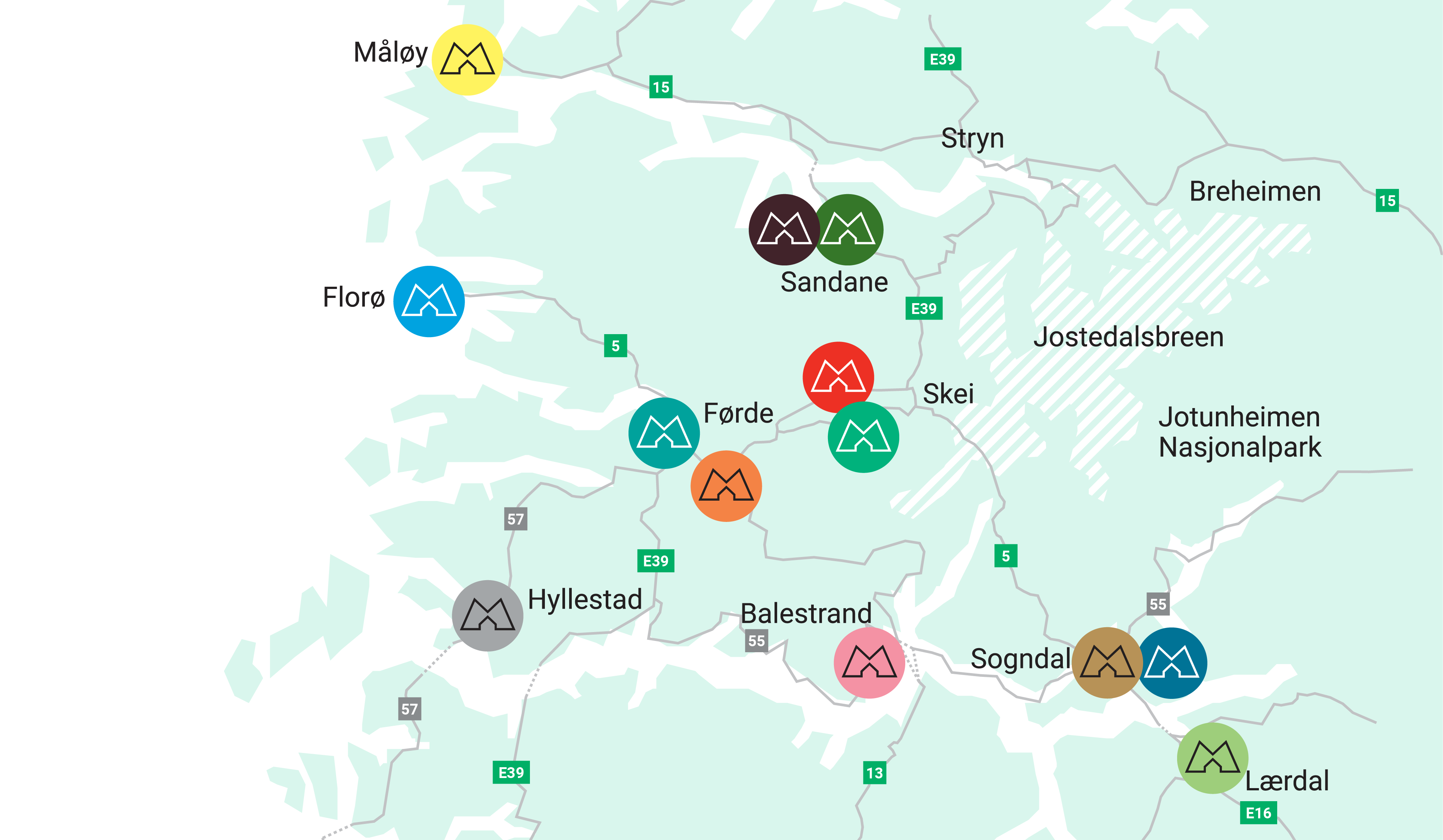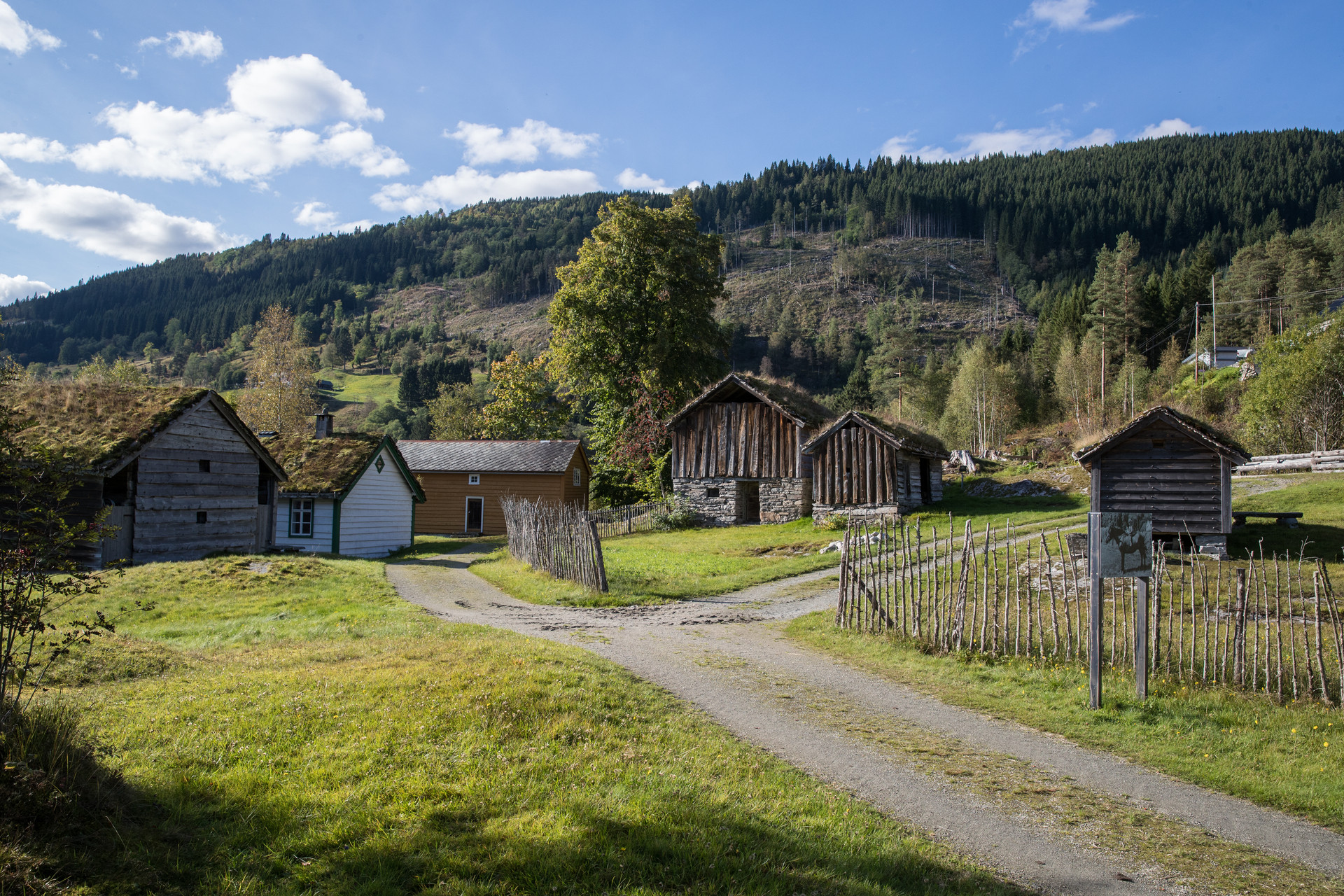History and establishment
January 1st 2009, a number of independent museums within former Sogn og Fjordane County consolidated to establish the Museums in Sogn og Fjordane foundation. Within the newly formed Vestland County, we are currently one of twelve consolidated museums. Since 2009, some have left and some have joined. Today, the foundation includes the following sites:
Astruptunet, The Eikås Gallery, The Heiberg Collection – Sogn Museum of Cultural History, Norwegian Millstone Centre, Sogn og Fjordane Coastal Heritage Museum, Nordfjord Museum of Cultural History and Holvikejekta, Norwegian Museum of Travel and Tourism, Sogn Fjord Museum, Sogn og Fjordane Art Museum, Sunnfjord Museum, Vågsberget (The text continues below the map)

Our purpose
“The foundation’s purpose is to run museums”, say the statutes. They further establish that “The foundation shall collect, conserve, document, research and disseminate. The foundation can also conduct other cultural activities. The museum will manage revenue-generating activities connected to the main enterprise, namely activities that contribute to the foundation’s ideal and cultural purpose, such as consulting and specialist services, cafés, gift shops and renting/letting.”
Organisation
MISF is organised into four departments across individual museums. This allows for stronger professional units and smoother collaboration. There is also an HR director in charge of staff, and the departments are as follows: the Research and Conservation Department, the Cultural Heritage Department, the Art Department, and the Operations, Administration and Finance Department. Each of these has their own department head which reports to the managing director. Along with the head of HR, these make up the MISF executive group.
The Board is the foundation’s topmost authority, making sure the enterprise is run in accordance with the statutes. The Board election committee is appointed by the Council. The Council consists of representatives from the county municipality, regional councils, relevant municipalities, founding boards, and artists’ associations. The Council is tasked with providing statements on annual reports and other issues presented by the Board.
Employees
Our largest professional groups are museum disseminators, museum hosts, museum leaders and carpenters/craftsmen. We also have conservators and curators, a museum farmer, financial staff, marketing and communication staff, among others. Most work at a single site, while others have responsibilities across multiple museums. Some also work for the joint administration, located at the Nordfjord Museum of Cultural History, in Sandane. (The text continues below the photo.)

Plans and strategies
The separate sector strategies remain important guiding documents for the museum enterprise. The overall direction is set by the Museums in Sogn og Fjordane’s strategy plan. Its vision states that “Museums in Sogn og Fjordane shall be an active and relevant actor within the fields of art and cultural heritage.” The strategy is being revised, and will be updated in 2023.
The dissemination plan presents the most important initiatives for ensuring relevant, quality dissemination, while the joint management plan is meant to ensure comprehensive, efficient and academically up-to-date management of all our collections. The research plan is a guidance tool for our long-term research efforts. The professional strategy will ensure the necessary updating and development of professional skills within key areas. We have also developed a quality policy, which is meant to strengthen the quality of all contributions, ensuring that we work towards achieving our set goals.
An important foundation for the development of plans and strategies is Stortingsmelding 23 (2020-2021), Museums in Society – Trust, Time and Objects. It lays out the overall Norwegian political direction and strategy until 2050.
